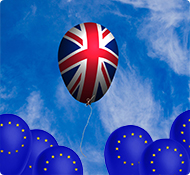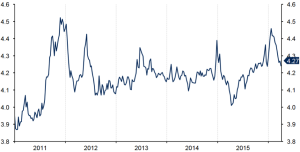
On June 16, 2017, Amazon surprised the business world by announcing that it would acquire Whole Foods for approximately $13.7 billion. The acquisition is Amazon’s largest to date by far as well as a significant departure from its traditional strategy of growing businesses organically.
There has been much speculation about the strategic rationale behind this move. Some have referred to the overlap between the clientele of Amazon Prime and of Whole Foods, others to the value of a brick-and-mortar presence, and still others to the need for scale in building out grocery supply chains.1
Whatever the specific motivation for this transaction, we believe the acquisition is not an isolated occurrence but part of a broader trend: the shift from the largely digital ecosystems that dominate today to ones richly exploiting both the digital and the physical worlds. This shift signals opportunities not only for digital giants but also for physical incumbents to build new digital-physical ecosystems. Orchestrators of these hybrid ecosystems must follow some new principles and adopt a set of behaviors different from those that purely digital ecosystems require. The Japanese company Recruit offers a rich example of how to succeed in this new realm.
The Rise of the Digital Giants
Digital ecosystems—networks of companies and consumers that interact dynamically to create mutual value—have enabled some of the most profitable and most valuable business models that exist today.2 Digital ecosystems create value primarily through the delivery of digital goods and services, using scalable digital platforms such as two-sided marketplaces. The five most valuable public companies in the US—Apple, Google, Microsoft, Facebook, and Amazon—are all orchestrators of digital ecosystems. This is a strong contrast with ten years ago, when Microsoft was the only digital player alongside four physical giants (Exxon Mobil, General Electric, AT&T, and Citigroup) in the top five.3
What has allowed digital ecosystems to become so dominant? The answer lies in a winner-take-all dynamic of competition, which allows winners to reach tremendous scale and build impregnable moats around their positions. Three sets of factors have contributed to this competitive dynamic:
- Zero Marginal Costs and Positive Network Effects. Successful digital ecosystem orchestrators offer a dominant service in their core category. Think of Google’s search engine or Facebook’s social network. Starting from this service, orchestrators have relied on virtually zero marginal production costs, network effects, and low barriers to geographical expansion (in the absence of protectionism) to grow their digital ecosystems to gigantic proportions. Digital marketplaces, like Amazon’s, embody all these features: adding one or a thousand more products for sale comes at virtually no additional cost; the more people who use the marketplace, the more attractive it becomes; and digital goods can be delivered around the world at little extra cost.
- Unprecedented Data Accumulation and Analysis. Successful digital giants take advantage of the “data flywheel effect”: as digital ecosystems grow, they accumulate more data, which then fuels improvements in services, thus stimulating further growth. Improvements in data processing and analysis, driven by cumulative experience, and the spreading of investment costs over large volumes of data, strengthen the advantage. The ability of digital giants to attract and develop digital talent in areas of short supply, like machine learning and data engineering, reinforces the virtuous circle even more.
- Seamless and Comprehensive Digital Experience. Finally, once they reach a certain scale, digital ecosystems can become even bigger by providing a seamless experience for users, giving them the ability to satisfy multiple needs on a single platform. Digital winners manage to build comprehensive ecosystems, including a wide variety of service providers, to this end. By reducing the incentive for users to leave the platform, these ecosystems are able to capture most of their attention, time, and value. The most salient example of the one-stop digital ecosystem so far is the Chinese app WeChat (which combines the functionalities of Amazon, Facebook, Instagram, Twitter, Yelp, and others), but all US digital ecosystem orchestrators are moving in this direction.
Orchestrators of digital ecosystems have all focused on exploiting this winner-take-all dynamic to establish dominant positions. Nondigital players, by contrast, lacking the kind of advantages noted above, have mostly not succeeded in building digital ecosystems. Consider the fate of Sears, which in the early 2010s invested heavily in an e-commerce business that would complement its traditional brick-and-mortar business. In the end, Sears’s digital business failed to achieve the necessary scale, and this, coupled with a sales decline in the neglected core business, led to a loss of more than 75% of market value for the company.4
More: www.bcg.com: The BCG Henderson Institute is The Boston Consulting Group’s internal think tank, dedicated to exploring and developing valuable new insights from business, technology, and science by embracing the powerful technology of ideas. The Institute engages leaders in provocative discussion and experimentation to expand the boundaries of business theory and practice and to translate innovative ideas from within and beyond business. For more ideas and inspiration from the Institute, please visit: Ideas & Inspiration




